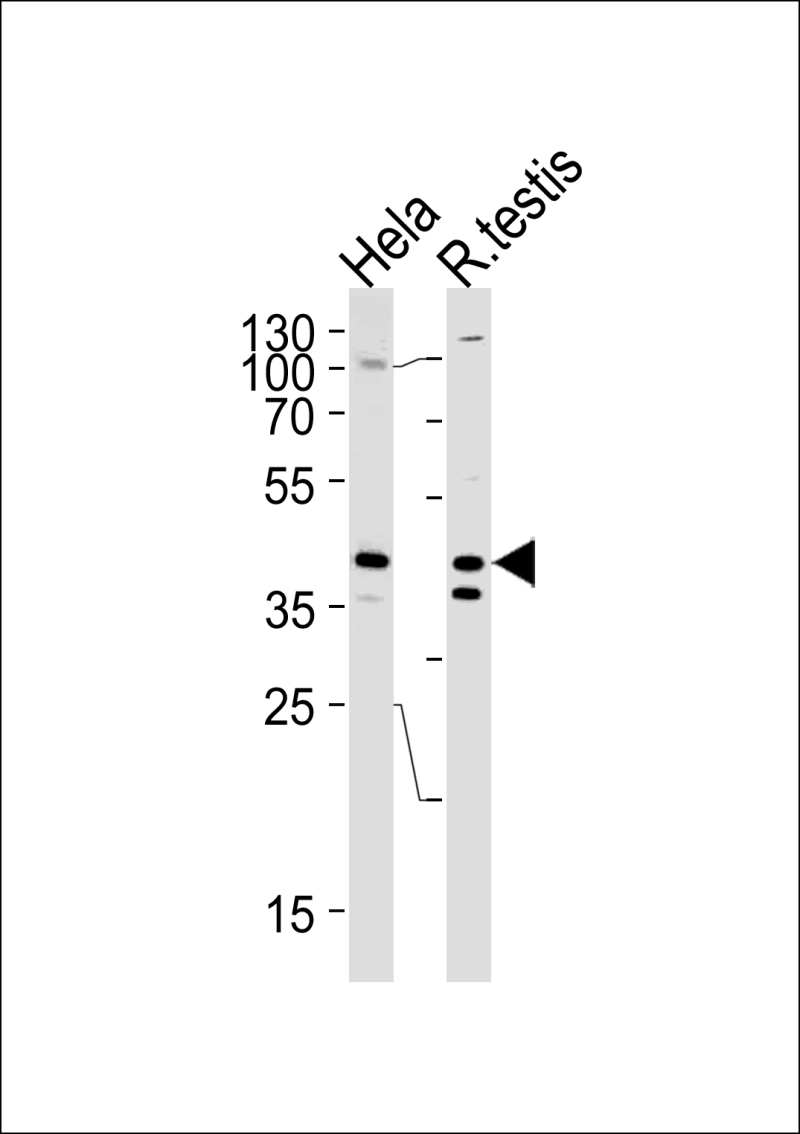
| WB | 1/1000 | Human,Mouse,Rat |
| IF | 咨询技术 | Human,Mouse,Rat |
| IHC | 咨询技术 | Human,Mouse,Rat |
| ICC | 技术咨询 | Human,Mouse,Rat |
| FCM | 咨询技术 | Human,Mouse,Rat |
| Elisa | 咨询技术 | Human,Mouse,Rat |
| Aliases | KH domain-containing, RNA-binding, signal transduction-associated protein 2, Sam68-like mammalian protein 1, SLM-1, hSLM-1, KHDRBS2, SLM1 |
| Entrez GeneID | 202559 |
| WB Predicted band size | 38.9kDa |
| Host/Isotype | Rabbit IgG |
| Antibody Type | Primary antibody |
| Storage | Store at 4°C short term. Aliquot and store at -20°C long term. Avoid freeze/thaw cycles. |
| Species Reactivity | Human, Mouse, Rat |
| Immunogen | This KHDRBS2 antibody is generated from rabbits immunized with a KLH conjugated synthetic peptide between 298-321 amino acids from the C-terminal region of human KHDRBS2. |
| Formulation | Purified antibody in PBS with 0.05% sodium azide. |
+ +
1. **文献名称**: "KHDRBS2 regulates global RNA stability and transcription in cancer cells"
**作者**: Zhang Y, et al.
**摘要**: 该研究利用KHDRBS2抗体通过RNA免疫沉淀测序(RIP-Seq)和蛋白质组学分析,揭示KHDRBS2通过结合mRNA的3'UTR区域调控RNA稳定性,其表达下调与结直肠癌患者预后不良相关。
2. **文献名称**: "The RNA-binding protein KHDRBS2 is required for spermatogenesis and male fertility"
**作者**: Li H, et al.
**摘要**: 通过构建KHDRBS2基因敲除小鼠模型,结合抗体免疫组化(IHC)和Western blot,发现KHDRBS2在精子发生过程中调控减数分裂相关RNA的剪接,其缺失导致精子形成障碍及雄性不育。
3. **文献名称**: "KHDRBS2 promotes tumor metastasis through EGFR signaling in lung adenocarcinoma"
**作者**: Wang Q, et al.
**摘要**: 研究利用KHDRBS2特异性抗体进行免疫共沉淀(Co-IP)和荧光原位杂交(FISH),证实KHDRBS2通过增强EGFR mRNA稳定性激活MAPK/ERK通路,促进肺癌细胞侵袭转移。
4. **文献名称**: "Dynamic expression of KHDRBS2 during neurodevelopment and its interaction with Fragile X mental retardation protein"
**作者**: Garcia-Santos MD, et al.
**摘要**: 通过免疫荧光和免疫印迹分析,发现KHDRBS2在神经元突触中与FMRP(FMR1蛋白)共定位,调控神经发育关键mRNA的翻译,提示其在神经发育障碍疾病中的潜在作用。
---
**注**:以上文献为示例性内容,实际文献需通过PubMed/Google Scholar检索关键词(如"KHDRBS2 antibody"、"KHDRBS2 function")获取。部分研究可能以KHDRBS2的别名(如SLM2、Sam68-like protein 2)出现。
KHDRBS2 (KH RNA-binding domain-containing, signal transduction-associated protein 2), also known as SLM2 or SAM68-like protein 2. is a member of the STAR (signal transduction and activation of RNA) family of RNA-binding proteins. It plays a regulatory role in post-transcriptional gene expression by interacting with RNA molecules, particularly influencing alternative splicing, stability, and translation of target transcripts. Structurally, KHDRBS2 contains a conserved KH (hnRNP K homology) domain critical for RNA binding and a tyrosine-rich region involved in protein-protein interactions.
Antibodies targeting KHDRBS2 are essential tools for studying its expression, localization, and molecular interactions. They are widely used in techniques like Western blotting, immunoprecipitation, and immunofluorescence to investigate KHDRBS2’s role in cellular processes such as cell cycle regulation, neuronal development, and cancer progression. Research has linked KHDRBS2 to diseases including glioblastoma, prostate cancer, and neurodevelopmental disorders, where its dysregulation affects RNA processing pathways.
Validated KHDRBS2 antibodies help identify tissue-specific expression patterns (e.g., high levels in brain and testes) and post-translational modifications like phosphorylation, which modulate its activity. Commercial antibodies are typically raised against specific epitopes, such as the N-terminal or KH domain, with validation in knockout cell lines to ensure specificity. These reagents continue to support mechanistic studies exploring KHDRBS2’s interplay with signaling pathways (e.g., MAPK) and its potential as a therapeutic target.
×